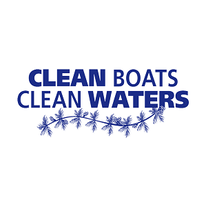How do Invasive Species Spread?
Invasive species often spread unintentionally by people and their activities:
- Boats- invasives can be carried by ship ballast water OR on boating and recreational equipment.
- Firewood & shipping crates- transporting firewood to homes and campsites can spread invasives. Invasive insects can hitch a ride in shipping crates that travel around the world.
- Ornamental plants- can escape into the wild from yards and gardens.
- Household pets and plants- released when owner can no longer take care of them or they have outgrown them.
Why are they an issue?
When an invasive species is introduced or spreads into an ecosystem, it can be damaging or harmful. They often have an adaptation that allows them to have an advantage in spreading and out-competing native species, such as a high reproductive rate or a lack of natural predators to help keep the species in check. This can be devastating to native wildlife and vegetation.
Invasive species education and control costs the United States over $100 billion every year!
Invasive species education and control costs the United States over $100 billion every year!
What Can You Do?
- Learn about invasive species threats in your community and surrounding areas.
- If you think you find an invasive species, report it so that it can be accurately identified.
- Spread your knowledge about prevention to others!
|
|
|
Michigan Law
Michigan Law Pertaining to Aquatic Invasive Species:
Michigan law prohibits placing a boat, trailer or equipment in Michigan waters if aquatic plants are attached (MI Public Act 91 of 2009).
Michigan law prohibits placing a boat, trailer or equipment in Michigan waters if aquatic plants are attached (MI Public Act 91 of 2009).
Clean Boats, Clean Waters

Clean, Drain, Dry, Dispose
CLEAN- boats, trailers and equipment
DRAIN- live wells, bilges and all water
DRY- boats and equipment
DISPOSE- of unwanted bait in the trash
species information
Phragmites
Note: There is a native phragmites look-alike present in Ontonagon County.
|
|
|
Hemlock Woolly Adelgid
New Zealand Mud Snail
|
Red Swamp Crayfish
|
|
|
|
Parrot's Feather
|
Yellow Floating Heart
|
|
|
|